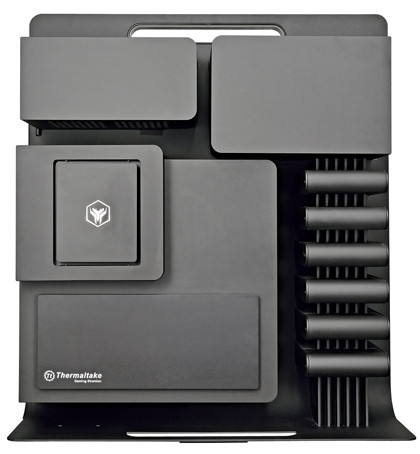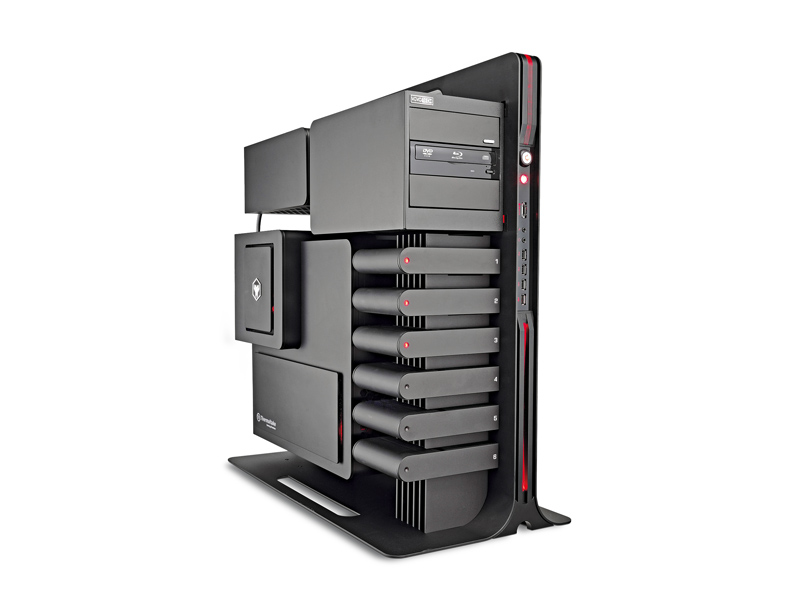TechRadar Verdict
Yes, it is the fastest thing on two cards, but boy do you pay for it. Not our cup of tea
Pros
- +
Lightning benchmarks
- +
Fantastic RAID array
Cons
- -
Surprisingly shoddy case
- -
Overpriced
Why you can trust TechRadar
The first of YOYOtech's Fi7epower series we came into contact with was its record-breaking i7 flagship machine, manufactured in conjunction with Intel to coincide with the launch of its new, all-singing, all-computing processor. That chunky beastie was yours for £4,000.
Well over a year later, YOYOtech has a new star, the Fi7epower MLK3, with an extra £1,500 stuck onto that price tag, but it has the original bested on all fronts. Yes, you read that right, this PC is being sold for £5,500. That's over 10 times more than I've ever spent on a car, but then I am a bit of a miserly bast...
It's easily the most expensive PC I've had the opportunity to play around with too. Luckily, given that incredible expected outlay, it's also the fastest. So yes, this PC is sold for £5,500, but is it worth that much?
Wallet buster
If you're asking that question, like each of us on the team have been doing since it landed like a Big Daddy on our now-groaning test bench, then you really can't afford this machine. In any case, you're a fairly clued-up member of the PC community and so it realistically isn't for you. Why?
Well, my first instinct is to say it's because the Fi7epower's core demographic isn't someone with any idea of what components they want, or how much those components cost. Personally, I'd say it's for someone who wants the best PC that money can possibly buy, but who has little idea what they would actually want in the machine, just that they want the best of everything.
This Fi7epower, then, is essentially the manifestation of a rich-kid's technological tick list. Top-end CPU? Tick. Multiple DX11 graphics cards? Tick. Ludicrous amounts of high-speed RAM? Tick. Load of storage? Tick. Multiple SSDs in RAID? Tick.
It's essentially a tech-demo to show what happens when you jam as many of the fastest components you can into a bizarre-looking chassis and then call it a PC. It's all jammed in there like a technocrat's wet-dream.
So, money's no object and all you want is a PC that will do everything, and do everything faster than any other commercial PC on the planet. Just give YOYOtech a shout then and they'll put it all together without you having to have any input in the process whatsoever.
But that's the key; this is a money's-no-object machine and I just can't in all good conscience say that the Fi7epower MLK3 is anything like value for money.
Sure, it's still going to be lightning fast in six month's time, and the Bloomfield chipset is ready and waiting for the six-core Gulftown processors when they finally arrive in the first quarter of this year, but do you really need to spend a whopping £5,500 to get this sort of performance?
The short answer is no; especially if you're looking at this machine from a PC gaming perspective. At a time when we're seeing the latest games still looking and running brilliantly on year-old graphics cards due to their console origins, you're not getting five times the performance of a £1,000 rig here.
Indeed, you're looking at severely diminishing returns as soon as you go anywhere north of paying £2,000 for a PC.
Going nuclear
The reason for this is that the twin HD 5870s humming at the heart of the MLK3 can take care of any gaming benchmark you put in front of them. That's £530 for the pair, and they happily out-perform the twin-GPU HD 5970, which is the same price.
If you wanted seriously topwhack graphics, you could get a pair of HD 5970s, but that way CrossFireX and madness lies. However, the point is that you could pair up the cards in this machine with the necessary PSU to keep them fed, drop them into any current £1,000 PC and get pretty damned close to the performance figures you're seeing from the Fi7epower.
The RAID pairing of Intel X25 SSDs, though, is nothing short of fantastic. The sort of benchmarks we're getting from those two beauties is jaw-dropping, with read speeds of well over 500MB/s and 4K writes of 131MB/s. Sadly, though, it takes a while for the rig to go through it's POST checks and RAID config, meaning that boot times haven't decreased.
But what of the processing power? Sure, the Core i7 975 Extreme pootling away inside is the fastest CPU available and it's clocked up over 4GHz. But you're getting so little extra over something like the Lynnfield Core i7 870, a chip that's half the price, that you wouldn't notice the difference in real-world usage.
So these are all reasons why you wouldn't buy it, because you're a PCFormat reader and you understand the balance of price and performance. If you were the sort of person that didn't didn't care about such things this would be falling on deaf ears. After all, although there's practically nothing you could do with this machine that you couldn't do just as well with a rig for half the price, it is still the fastest machine ever.
But then it's like having to test-drive a Lamborghini without ever taking it above 70mph, because there are no roads around that will do justice to the raw horsepower you've got under the hood.
Case-off
It does look all kinds of funky though, with that vast, BMW designed chassis surrounding it. The case itself may be over £500, but it is doing some very interesting things. Separating out all the basic components so the PSU, storage drives and chipset never interfere with each other means you can more efficiently control the cooling process.

That said, if I'd spent as much on a chassis I would expect far superior build quality than what's apparent here. The boxes that house the PSU and optical drives feel flimsy and there's far more movement in them when they're locked in place than there should be.
I would also expect the design team to have come up with a more elegant solution than a couple of bits of black insulation tape to stop the optical drive caddy from scratching the matte black surface of the case when open. That's just insulting.
What we've got here, then, is more a status symbol and talking point for the obscenely rich person's study. You know, one where the PC is sat alongside a £15,000 solid oak desk.
Knowing something about PCs' and components' relative performance, we could put a machine together for half the price with the same benchmarks. But that would require effort and this machine asks for none.
Well, apart from the effort your butler's going to have to put in to get it into place.
